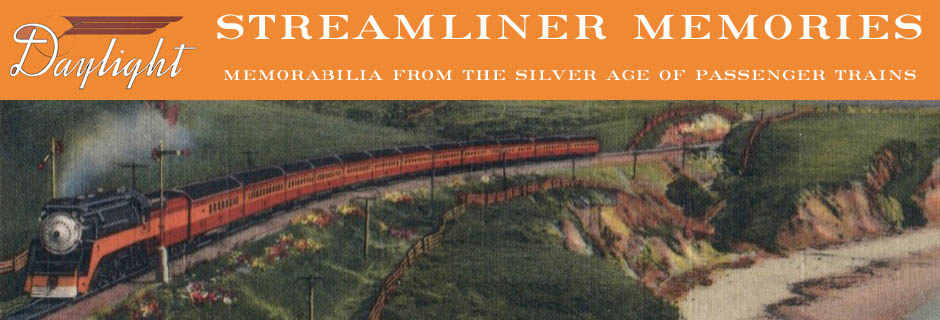In an effort to make train travel more affordable, Pullman introduced what it called the Coach-Sleeper in 1940. The car contained ten semi-private rooms, half seating/sleeping three people and half six people. This meant a single car could accommodate 45 people, far more than a standard section sleeper.
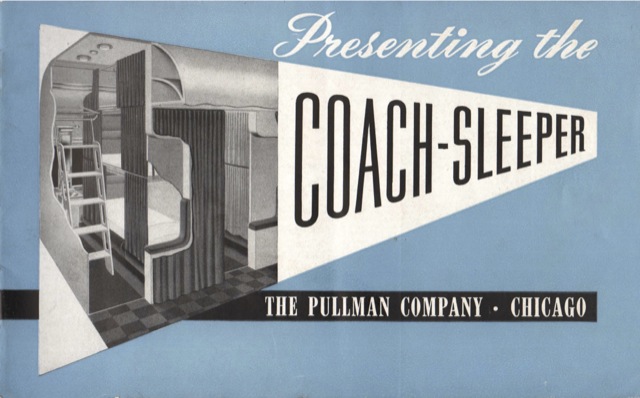
Click image to download a 2.6-MB PDF of this 12-page booklet.
Ordinary sleeping cars required a first-class fare plus a special Pullman fare. Like Budd’s post-war Slumbercoaches, Pullman planned to allow people to stay in the Coach-Sleeper without paying a first-class fare, and the sleeping car charge was less than a third of what people paid to use a lower berth. Like tourist sleepers, the lower fares would have meant Coach-Sleeper passengers wouldn’t have access to a train’s first-class lounges such as the observation car.
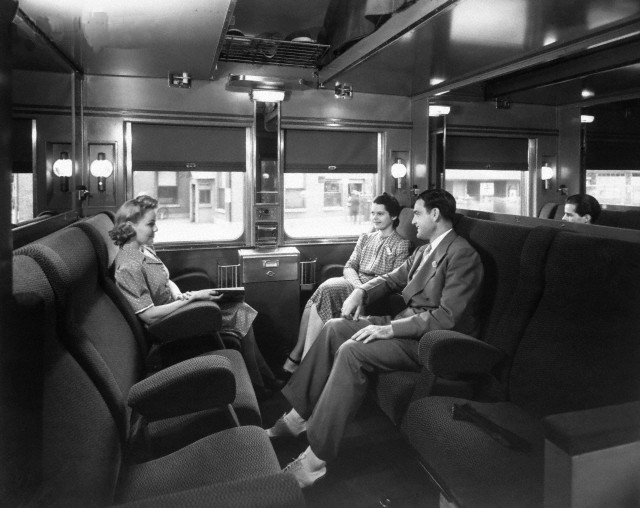
Like a coach, the daytime configuration offered little privacy between rooms. Note the low ceilings directly above the seats as the upper berths are permanently in the down position.
Aside from deleting the dressing rooms, the main way the car accommodates more people is by stacking berths three high instead of just two high. In the daytime configuration, seats were three wide with the aisle on one side of the car. Unfortunately, this meant only a third of the passengers got to enjoy window seats.
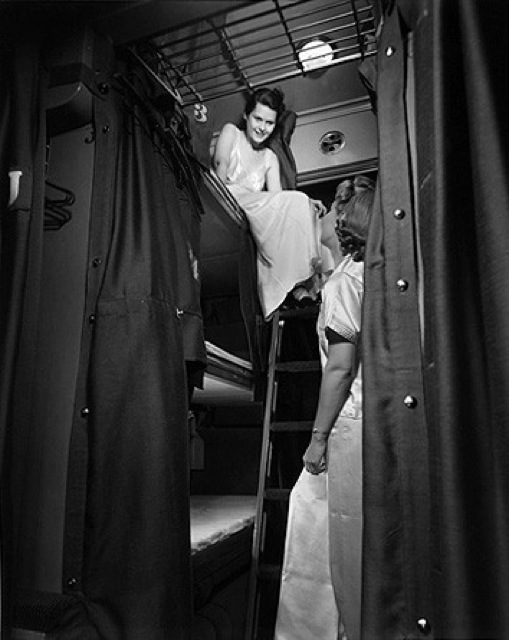
Traditional Pullman curtains offered privacy at night; berths were stacked three high to accommodate passengers in the three daytime seats.
The middle berths were nested beneath the upper berths and were lowered from the ceiling at night. Each room included a small sink that passengers could use in the evenings and mornings for washing hands and brushing teeth.
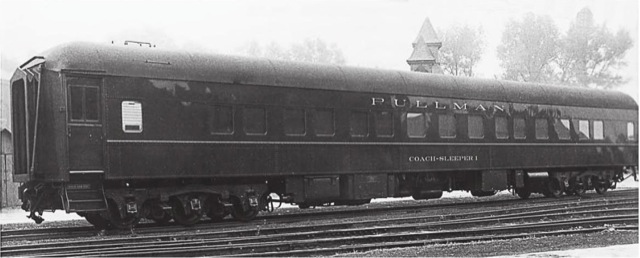
Click image for a larger view.
Externally the Coach-Sleeper did not look much different from any other standard, air-conditioned Pullman car. Standard Pullman cars were slightly taller than full-sized streamlined cars, so it is possible that three-stacked berths wouldn’t have fit in streamlined sleepers.

The floor plan shows that the rooms for three and six passengers were almost randomly distributed through the car. To fit more revenue passengers, the cars also lack the large dressing rooms found in most other Pullman sleepers. Click image for a larger view.
While parties of three or six could reserve an entire room for themselves, smaller groups would ordinarily expect to share a room with strangers. However, Pullman promised that some rooms would be reserved for women only while others would be only for men.
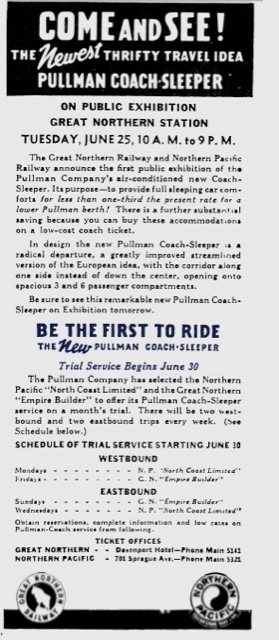
This ad from page 9 of the June 24, 1940 edition of the Spokane Spokesman-Review claims that the Coach-Sleeper was first tested on the Empire Builder and North Coast Limited. Click image for a larger view.
Unfortunately, no information is available about why the railroads did not buy any of these cars. Since the long-distance coaches used by many western railroads in the streamlined era typically had seats for just 44 to 48 people, it is possible that Pullman’s design simply tried to squeeze too many people into a car that would provide both coach seats in daytime and beds at night.
